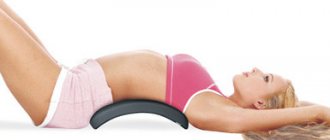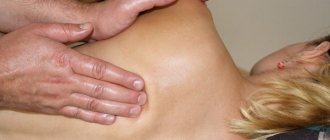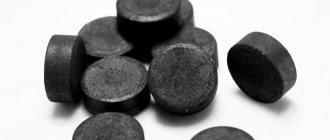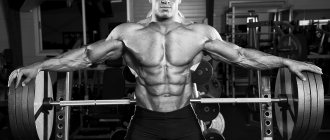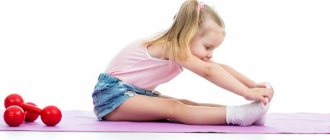≡ July 15, 2020 Category: Mind & Body
Every guy or girl who has firmly decided to learn how to do the splits (longitudinal or transverse – in this case it doesn’t matter) is probably familiar with numerous videos on YouTube where this exercise is easily and naturally performed by professionals. But can a beginner do this? And if so, how long will it take to train for this?
The answer to the first question is clear - yes, it is possible. As for the second, the correct answer to it will sound like this: it all depends on your attitude towards achieving the final result and how persistent and intense your training will be. And remember - even the prima of the Bolshoi Theater always warms up before stretching. And for beginners, warming up before stretching into splits must include a whole set of exercises. And not just any - but allowing each muscle, ligament and joint, one way or another, to warm up efficiently and effectively in the implementation of this position.
Is warming up for splits at home effective, and is it possible to do it without going to the gym? Of course - but only if all safety rules are followed, and at the same time having thoroughly studied (to begin with, at least theoretically - from articles, videos and photos) the entire step-by-step process of preparing for how to warm up the muscles before stretching the splits.
The most important thing is psychology
However, before moving on to a direct description of how to warm up before stretching, it is necessary to talk... about psychology. Yes, it’s about her - or, more precisely, about how our brain and the nervous system controlled by it work.
The main problem for a person who has never done extreme stretching is that his legs, spine and the whole body as a whole have been accustomed to certain movement patterns since birth. After all, our usual step rarely exceeds 70-75 cm, and the angle of the moving legs is barely 60°. Twine is three times more. And in order to sit on it, proper “charging” of the brain is no less important than exercising for the splits.
The fact is that when the “normal” (from the point of view of the brain) limits of muscle tension are significantly exceeded, he begins to perceive this as a danger and turn on a protective mechanism. In principle, this behavior of the nervous system is natural - after all, it is aimed at preventing tearing of the ligaments. But the muscles “protest” and strive to return to a position that is comfortable for them. And we need to “calm them down” - and thus allow them to slowly stretch to the desired length. How to do it? Of course, relax internally - by learning to control this process in the way that adherents of meditation in Eastern practices teach. Having learned to do this correctly, we will quickly develop the necessary flexibility, after which warming up before the splits will turn into not only an easy, but also an enjoyable experience.
Gradually, the body adapts to such a load - and, therefore, begins to perceive it as safe. It will become easier to stretch the ligaments, sharp tension (as a natural defensive reaction) will go away, the muscle structure will change, and you will be completely ready to achieve the final result.
Main types of exercises
Warm-up before training your legs, arms, abdomen and back includes extremely simple exercises - various rotations, twisting, squats, bending, push-ups. A good way to warm up quickly and effectively is to run. You need to start with a leisurely walk, then increase the pace, and in the last 7-10 minutes of warming up, start running at an average speed. You will use the maximum amount of muscle tissue, make your heart work faster, and speed up blood circulation. After such a warm-up before training at home, the body will be ready for a more serious load.
General warm-up
Warm-up exercises before training can be combined into the following groups:
- Universal. Relevant before any physical activity. Such complexes are carried out in school physical education lessons, so everyone knows them. The warm-up begins with turns and tilts of the head, then you need to move on to working out the shoulder girdle, arms, torso, hips, knees, and ankles. The final stage of preparation is breathing exercises.
- Special. The main difference before the universal program is the maximum warming up of the muscles that will work intensively during training. If this is a power load, tasks from the main complex are performed, but without weights.
- Coffee calories
- Treating shoes against fungus
- How to sew a hidden zipper into a dress
At home, you can warm up like this: jumping rope, walking at a fast pace with your knees high, going up and down the stairs. If you're going to train your abs, spin a hula hoop. Before a long run, it is important to do one set of lunges, squats, push-ups, and bends. Stretch your thigh and calf muscles, and be sure to rotate your knee joints and ankles.
Joint warm-up
This type of training helps to activate joints, tendons and ligaments, improves their mobility, coordination, and works the periarticular muscles. Often the complex acts as a full-fledged workout, it is so effective. It should be performed at home before strength training, fitness, yoga, or cardio exercise. What exercises to warm up the muscles before training are included in this complex? Examples:
- Tilt your head back and forth, left and right. Head rotation.
- Lateral tilts of the body.
- Stretch your arms up and to the sides.
- Rotations of the shoulders, forearms, hands, chest.
- Twisting the body, rotating the pelvis, turning the legs.
- Lifting, bending-extension of legs at the knees.
- Ankle rotations.
- Calf raises.
- Masks for hair growth and thickness are the best and most effective. Recipes with oils, cinnamon, pepper, etc.
- Skin rashes due to helminthiasis
- Ammonia-anise cough drops. Instructions for the use of ammonia-anise drops for adults and children
Stretching before exercise
Harmonious weight loss and improvement of body shape at home is only possible with the implementation of a comprehensive program. Stretching is not the last place in this matter. It is often recommended to do it after a sports activity, but this type of activity is also good as a warm-up before training at home. For exercises to produce results, they must be performed with a certain amplitude. If muscle tissue is poorly warmed up and stretched, there is a high probability of injury.
Before stretching, you need to perform a small set of warm-up movements. Everything needs to be done smoothly, pain should not be allowed. The feeling should be comfortable. After proper stretching, a pleasant warmth spreads throughout the body and you do not feel tired. If you want to do the splits, make this the goal of your main workout or cool-down. When your muscles become “hot”, perform dynamic stretching exercises:
- Take the tasks from the general warm-up as a basis. When performing them at home, stay longer at the highest point and try to stretch the muscle tissue as much as possible.
- If necessary, help yourself with your hands, but without effort or jerking.
- Sometimes at home it is difficult to adequately assess your progress and body position, so if possible, look in the mirror. This will allow you to see the main errors.
- Effective warm-up exercises for women and men - swings, rotations with legs, arms, spring lunges (can be dangerous for beginners!). Start moving in a small amplitude and gradually increase the angle of elevation.
Level of muscle plasticity
From a physiological point of view, there are three types of muscle corset flexibility.
- The first belongs to those lucky few who have been endowed with incredible plasticity by nature itself. They are the ones who show the wonders of plasticity in circuses and at various shows, literally curling into a ring and calmly devouring a cake with a spoon clutched in the toes of a leg thrown over the head.
- The second type of flexibility is not innate, but acquired. It characterizes people who professionally know how to warm and stretch muscles to the maximum possible limit for the body - primarily yogis, as well as ballerinas, acrobats, gymnasts, dancers and representatives of some other similar professions. Most of us belong to this type.
- And only the third type - the so-called “wooden guys” - are practically unable to develop such skills due to congenital problems with the musculoskeletal system. Although they can achieve certain success with regular home exercises.
Charcoal
Charcoal is made from lemon trees, olive pits, orange trees and even birch trees, as well as other trees and shrubs. It is famous for maintaining an optimal combustion temperature, but real charcoal will not burn for a long time and produces a large amount of ash.
If such coal is left on the fire, only ashes will remain. At the same time, it takes the same amount of time to ignite as a coconut one - the main thing is to constantly monitor it and turn it over in time.
Reade set Go!
Having received all the necessary theoretical information, let’s move on to practical recommendations on how to warm up before stretching and how to make this task easier for yourself.
Step #1. Good music selection. Ideally, it is better to mix it at different paces - more invigorating for the initial, quick exercises, and calmer - when the main exercises for stretching are done. Choose styles to suit your taste - from pop to Progressive House, or just take ready-made fitness selections specially written for stretching.
Recommendations from professionals
Good music, along with a boost of energy, will lift your spirits. Ideally, it should be a mix at different tempos. At the beginning of the warm-up, it is better to use upbeat melodies that set a high tempo. When it comes to more complex exercises that involve deep stretching, calm compositions are better suited.
Full warm-up - you can watch the exercises in the videos suggested above, or use the complex compiled yourself.
Basic stretching involves calmly working out a selected muscle group and holding it in certain poses for quite a long time.
Having received theoretical knowledge, it is worth starting practice.
Video: How to do the splits? Opening of the hip joints
https://youtu.be/lgZUq_iXlMw
Some useful tips
It wouldn't hurt to remember a few more useful tips.
- The morning hours are a great time for regular exercise, but stretching is easier to do in the evening (during the day, standard loads on the muscles warm up and partially stretch them naturally, and the effectiveness of the same movements becomes higher).
- It is extremely important to choose sportswear that is comfortable for you personally and specifically designed for such activities. Both the comfort of the suit and the material used to sew it play a role - after all, the intensity of bending, lunging, jumping and running is very high. Whether you choose leggings or loose-fitting sweatpants for this is not so important.
- Shoes. One, even the most universal pair, is not enough. Because it is better to do intensive warm-up in sneakers, and stretching - in ballet shoes, slippers, or even just in socks or barefoot.
- Warming bath. Sitting for at least 15 minutes in fairly hot water (if “these days” or other reasons do not interfere with this) means guaranteeing excellent warming up of the muscles. Which will bring us one more step closer to the cherished split.
How to properly warm up before training
This activity helps to gently speed up blood circulation, expand the range of motion of joints, and prevent injuries. How to properly warm up before training:
- Do simple exercises.
- Allow 10-15 minutes to warm up. If you practice in a cool room, you can increase the duration of this stage.
- Start working your upper body, gradually moving down.
- Warming up before training at home should be done at a leisurely pace, but sufficient to warm up the muscles.
What to remember to quickly increase your vocal range with exercise?
When doing this, keep a few things in mind:
- Bring the sound forward! This exercise not only expands the range of the voice, but also includes resonators in the work. Therefore, it is important to feel the sound in your face, and not take it back, “into yourself”!
- Rise smoothly, not abruptly! Gradually slide from a low tone to a high one, thereby expanding the range of your voice. Singing to the races has the opposite effect and will not connect your registers!
- Don't be afraid of the top notes - try to reach them! And don't neglect those below. In general, don’t be lazy and go through the entire vocal range. Sounds must go beyond the boundaries of the conversational familiar voice.
- Do not force the sound - that is, do not shout! Use a moderate voice volume, as if you were talking. Otherwise, you will never reach the top notes. Since the vocal cords will close tightly and will not be able to stretch. Start quietly, allowing them to become more elastic.
How else is range extension exercise useful?
A wide range is necessary for every vocalist. Perform this voice life hack to expand your range every day, and you will:
- You will make your ligaments elastic and your voice mobile.
- Remove the strain on your voice, because singing on a glissando has a relaxing effect on the larynx and ligaments.
- Get rid of transitional notes, and the voice will sound strong and even in timbre throughout the entire range.
- You will be able to sing complex songs, and not stagnate on two or three notes!
- Use all the resources of the voice inherent in nature, connecting resonators to work.
- Well, increase your vocal range easily and imperceptibly - your working range! We read what the difference is in the previous article about vocal range .
Why pre-warm up your body?
The most popular stretching exercises are usually difficult to perform, so you should start training with simple stretches for the splits.
You can do the following exercises while standing:
- swing your legs (forward, backward, to the sides) - you can perform the exercise by leaning your hand on a wall or chair. If it works without support, even better;
- body tilts - you need to place your feet shoulder-width apart, grab your elbows with your palms and bend down as much as possible. Try to touch your chest with your thighs;
- Lateral lunges - spread your legs wide, cross your arms over your chest. Perform smooth lunges from one side to the other;
- bridge against the wall - stand against the wall, raise your arms up and place your palms on the wall. Slowly lower your body back, helping yourself with your hands. You may not be able to get down to the floor the first time; the main thing is to avoid discomfort in your back.
While sitting, you can also do several high-quality exercises that will help you stretch and relax:
- Feet spread - sitting on your knees, spread your feet to the sides without moving your knees. Then sit in the space between your feet. Stay in this position until the tension in the hips increases.;
- “Butterfly” with an inclination - the “butterfly” exercise is performed by all gymnasts and dancers. To perform, you need to sit on the floor and connect your feet to each other. With your knees spread apart, lower and raise abruptly, feeling the tension in the inner thigh. Then deeply tilt your body forward and hold.
- Raising your legs while sitting is not an easy exercise, but it is effective. You need to sit down and stretch your legs in front of you. With both hands, take one foot and slowly pull it up.
Warming up before stretching helps prepare muscle fibers and ligament tissues to absorb stress. Local structures are qualitatively relaxed and become more elastic. The combination of these points reduces the risk of injury.
During pre-warming before stretching, the splits have a tonic effect on the blood vessels. Accordingly, the negative load on the heart is noticeably reduced. Tissues that are subjected to stress during exercise are better saturated with oxygen. The level of endurance increases during active training.
Warming up before stretching seems to be a good method of mental preparation. Such actions make it possible to mentally tune in to the perception of upcoming loads. As a result, there is an increased focus on maintaining the correct technique for performing stretching exercises.
Sit comfortably on the gymnastics mat. Keep your back straight. Bring your lower limbs together and extend them in front of you. Avoid bending your legs at the knees. From this position, gently tilt your body forward. Perform a high-quality deflection in the lumbar region. Stretch your head in the direction of your feet.
How harmful is a microwave oven?
The benefits and harms of a microwave oven is a topic that worries every owner of this device.
There are many points that raise doubts about whether to use a microwave. For example, many people believe that heating food in a microwave oven makes food harmful, destroys beneficial microelements, and plastic dishes release hazardous substances. Problems suspected to be caused by the microwave oven:
- Radiation exposure. Baldness, deterioration of the nails and reproductive system.
- Changes in the molecular composition of food. Problems with the gastrointestinal tract, cancer.
An urgent question is whether it is safe to feed children food that has been heated or cooked in the microwave. Nowadays, artificial feeding is becoming more and more popular. There is a hypothesis that the amino acids in milk and infant formula are transformed into toxic isomers in the oven, affecting the nervous system and kidneys.
Let's consider what other factors influence the harmfulness of cooking in a microwave oven.
Torsion component of radiation
Some Swiss, French and Russian scientists believe that there is a torsion component in the magnetron radiation. In other words, heating food in a microwave oven risks irradiating the food with an information field. Because of this, after eating food that has been in the microwave, a person often begins to get irritated, suffer from insomnia and headaches.
Heat
Another opinion claims that the ultra-high frequencies of the SVP oven have a detrimental effect on human organs that do not have blood vessels. Excessive heating of the body is compensated by the circulatory system, but if there are no vessels, overheating occurs and the functions of these organs decrease. For example, vision problems arise.
https://youtu.be/bjJXNUdjdUs
Effect on food
It is believed that food should not be heated in the microwave, as the radiation ionizes the food. During processing, atoms lose electrons, and this changes the molecular composition of the products, with unpredictable consequences.
Foods that should not be heated in the microwave, as they form carcinogens:
- meat;
- cereals and milk are saturated with harmful substances;
- defrosted vegetables and fruits will contain glucosides and galactosides;
- greens - in addition to glucosides and galactosides, nitrilosides are formed in it.
You can always find an alternative to reheat food.
The following can replace a microwave:
- Multicooker. It may have additional "Warm" and "Keep Warm" functions, which are especially useful.
- Roaster. This is a mini-oven that is so multifunctional that it replaces many kitchen appliances.
- Electric oven. A separate appliance that performs the same functions as a classic oven.
- Double boiler. With it you can not only quickly heat up food, but also “refresh” stale bread or a loaf.
- Air fryer. Heats up instantly and leaves crispy crusts on food.
- Plate. The simplest, but most reliable remedy.
There are many kitchen appliances available for heating food instead of a microwave if a person has any concerns about using it.
How to improve your voice
The characteristics of a person's voice are partly determined by congenital and acquired features of the body's anatomy. For example, if you have a deviated septum from boxing as a child, you will have a nasal sound until you have surgery. If you are a natural soprano, you are unlikely to speak in a low voice during public speaking. However, you can influence the characteristics of your voice, which are determined by the physiological characteristics of the speech apparatus and the body as a whole. Many physiological processes and states are formed by our psyche, so they are amenable to conscious control.
